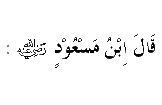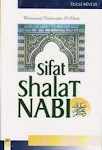THE SALAFI MOVEMENT IN
The puritanical "cleansing" of Islam has a long
history in
between Indonesian scholars and Middle Eastern
mentors. Literalist interpretation of the Quran may
not reflect mainstream practice, but historically it is
a well-established tendency within Indonesian Islam.
That said, the salafi movement that arose in the
1980s in the country did not consciously build on the
past, and its leaders saw little to admire and much to
condemn in earlier movements. Thanks to assistance
from the
to resources and educational opportunities hitherto
unimaginable, and it made good use of them to
increase its ranks rapidly.
A. ORIGINS
Salafi scholars themselves trace the movement back
to the so-called Padri Wars in
about 1832.15 It began when three local leaders from
movement occupied it in 1803, returned to teach the
Wahabi message, including cleansing Islam of all
impurities, returning to strict interpretation of the
Quran and hadith, and eradicating vice from daily
life, including cockfighting and tobacco. Men were
required to grow beards and wear turbans, women to
cover their faces. The men leading this purification
drive undertook armed assaults against villages that
would not accept the new teachings, and in the
process, undermined the old social order and
established a new one more conducive to trade. The
Padri Wars changed the political, economic, and
social fabric of large swathes of West and North
from
influence had sharply declined that the strict controls
in Padri strongholds began to relax.16 The influence of
Middle Eastern developments on one of the earliest
15 Some go further back. Ja'far Umar Thalib in an article
entitled "Pasang Surut Menegakkan Syari'ah Islamiyah", gives
credit to the Acehnese Sultan Iskandar Muda (1603-1637) for
being a pioneer of tajdid or renewal. See Salafy, special
edition No.40, 1422/2001, pp. 2-12.
16 Christina Dobbin, Islamic Revivalism in a Changing
Peasant Economy,
pp.128-187.
"purifying" movements was thus immediate and
direct.
Indonesian students returning from
University at the turn of the 20th century brought with
them the ideas of the Egyptian reformer Muhammad
Abduh, who called for renewal of Islam through return
to the sources of fundamental truths -- the Quran and
the hadith -- combined with the appropriate adaptation
of Western political concepts, such as democracy.
Abduh, not a favourite with today's salafis, was the
inspiration for
movement, Muhammadiyah, founded in 1912.17
From the outset, Muhammadiyah, which developed
into one of
was more progressive than puritanical, more modernist
than fundamentalist, with a particular focus on
improving the education and welfare of its members
through construction of schools and hospitals. But
perhaps because of its origins in a back-to-basics
approach to Islam, it has always had a conservative
wing, and people of a Muhammadiyah background
are well-represented among the salafis today.
Mohammed Abduh and his successor, Rashid Rida',
were also the inspiration for the emergence of a much
more puritanical organisation, Persatuan Islam or
Persis. Founded in 1923 in
group to explore new currents in Islamic thought, it
became a prominent voice for cleansing Islam of
innovations and for the application of the principles of
the Quran and the hadith to contemporary conditions.
Its focus was scholarly research, with particular
emphasis on religious ritual and the surrounding law.
It also made a point of trying to reach and educate the
Muslim public about Islam, through public meetings,
study groups, and various publications containing
fatwas and essays.18
In 1936, Persis set up a school, the Pesantren
Persatuan Islam in
Bangil,
first salafi school in
pesantren that explicitly opposed teaching any of the
17 Ja'far Umar Thalib calls Abduh a rationalist/mu'tazilite who
took an oath of allegiance to "Jewish Zionist Freemasonry",
and says his movement was a deliberate effort by international
Zionism to block the growth of salafism led by Muhammad
Abdul Wahab. See "Pasang Surut Menegakkan Syari'ah
Islamiyah", op. cit.
18 Howard M. Federspiel, Islam and Ideology In The
Emerging
1957 (
ICG
four schools of Islamic jurisprudence (mazhab), and
focused almost exclusively on study of the Quran and
the hadith.19 Today it is very much part of the salafi
movement, and some of the leading salafi figures
have studied there, including Ja'far Umar Thalib (who
is more charitable to Persis than to other reform
movements). A few of the
family backgrounds, most notably Imam Samudra.
Al-Irsyad is another organisation that continues to
feed into the salafi movement. It emerged in the early
1900s as an association of the growing Arab-
Indonesian community, mostly from the Hadramaut
region on
long resident in
Surkati (sometimes seen as Soorkati). Al-Irsyad
focused on education for the Hadrami community but
also was committed to purifying Islam and Islamic
practices from innovation and idolatrous practices.20
Surkati, a disciple of Rashid Rida', is now seen in
retrospect by Indonesian salafis as having been too
accommodating to non-salafis, a fatal flaw.21 But a
number of al-Irsyad schools, particularly in central
and east Java, today form part of the core of the salafi
movement, and there is a disproportionate presence of
men of Hadrami descent among the salafi leadership.
The three decades following Indonesian independence
in 1949 were lean ones for Islamic puritanism, in part
because of the political climate. A series of regional
rebellions against
made President Sukarno and the army suspicious of
all groups on what they called "the extreme right".
While Persis, parts of the al-Irsyad organisation,
conservatives within Muhammadiyah, and others
kept aspects of the puritanical vision alive, there
was little evidence of anything resembling a salafi
movement.
It was only in the 1980s that such a phenomenon
began to develop, largely because of four factors: the
availability of Saudi funding; the development of
campus-based groups that spurred the growth of a
Muslim publishing industry; the war in
and the establishment in
19 Martin van Bruinessen, "'Traditionalist' and 'Islamist'
pesantren in contemporary
ISIM workshop on "The Madrasa in
Federspiel, op. cit.
20 Natalie Mobini-Kesheh, The Hadrami Awakening:
Community and Identity in the
1900-1942 Ithaca, 1999), pp. 54-63.
21 ICG interview,
Study of Islam and Arabic (Lembaga Ilmu
Pengetahuan Islam dan Arab, LIPIA) as a branch of
the Imam Muhammad bin
Today's salafis, in fact, do not see themselves as
carrying the torch of earlier efforts to purify the faith.
The movement that emerged in the 1980s, in their
view, was a clean break with the past.













0 komentar:
Post a Comment